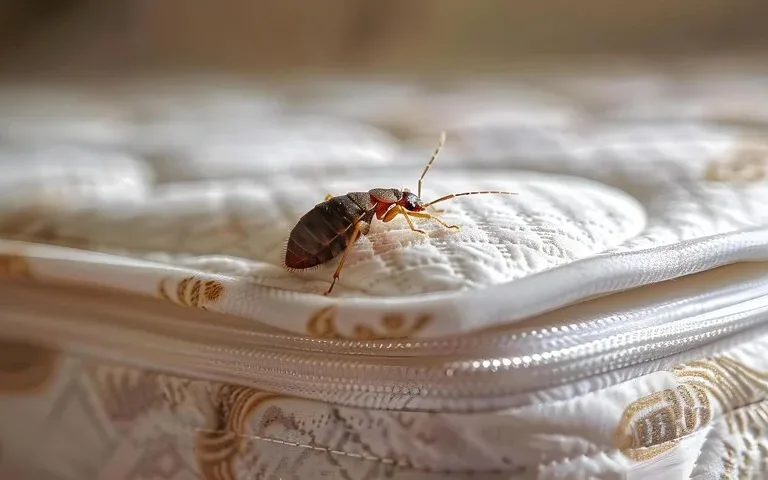Reliable Bed Pest Therapy Strategies: A Key Component of Pest Control
The revival of bed insect invasions has underscored the necessity for efficient therapy methods within the bug control market. These durable insects, efficient in evading traditional techniques, demand a multifaceted approach that incorporates both traditional and cutting-edge approaches. Recognizing their habits is important, as is the application of advanced technologies and preventative actions. Yet, regardless of the variety of options available, the inquiry continues to be: what combination of techniques confirms most efficient in not only eliminating these insects yet also preventing their return? Exploring this complicated concern can result in even more educated techniques and better results for those influenced.
Comprehending Bed Bug Habits

Among the specifying features of bed insects is their ability to duplicate swiftly. A solitary woman can lay hundreds of eggs in her life time, resulting in speedy population development if left unchecked. In addition, bed pests can make it through for numerous months without feeding, enabling them to endure durations of host lack, which can impede prompt administration efforts.
:max_bytes(150000):strip_icc()/Bed-bug-control-tips-and-tricks-2656377-e580f433c55a4a98826e429753062084.jpg)
Standard Therapy Approaches
While contemporary approaches to bed pest management have actually acquired appeal, standard treatment approaches remain fundamental in addressing problems. These methods largely include chemical therapies and physical treatments.
Chemical chemicals, such as pyrethroids and neonicotinoids, have been traditionally employed to get rid of bed bugs. These substances function by interfering with the nerves of the bugs, leading to their ultimate death. Due to the development of resistance among bed pest populations, performance can differ.
Physical methods, including warmth treatment, have actually also belonged to typical techniques. This includes elevating the temperature of infested locations to a dangerous degree for bed insects, generally around 120 ° F(49 ° C) for continual periods. This approach is specifically useful as it can permeate numerous products and does not leave chemical residues.
Additionally, detailed cleansing techniques, such as vacuuming and washing ravaged bed linen and garments, are necessary in this approach. Sealing splits and holes, along with utilizing bed mattress coverings, can also avoid bed insects from establishing themselves in living rooms. Jointly, these typical approaches offer a vital structure for handling bed insect infestations effectively.
Modern Technologies in Therapy
The landscape of bed pest therapy has actually developed dramatically with the introduction of modern developments that improve performance and efficiency in managing infestations - Bed Bug Heat Treatment. Among the most notable innovations is using warmth treatment, which entails increasing the temperature level of infested locations to degrees dangerous to bed pests. This approach not just eliminates adult insects yet also targets eggs, hence interrupting their reproductive cycle
Another advancement is the implementation of sophisticated surveillance systems, such as bed pest detection pet dogs and high-tech traps equipped with sensors. These devices help determine infestations early, enabling prompt intervention. In addition, the growth of pesticides with novel modes of activity, designed to get rid of resistance, guarantees that bug control experts have efficient options at their disposal.
Furthermore, the combination of modern technology in parasite control management, such as data analytics and mobile applications for tracking and reporting invasions, simplifies the therapy procedure. These developments collectively add to more lasting and effective bed pest management techniques, mirroring the industry's ongoing dedication to enhancing insect control outcomes. Therefore, both property owners and pest management professionals can approach infestations with greater confidence and precision.
Preventative Measures for Problems
Reliable avoidance approaches are essential in lessening the danger of bed insect invasions, with positive steps playing a vital role in guarding both household and business areas. One of the most reliable methods is routine assessments of living and workplace, especially in areas where individuals regularly collect, such as hotels and public transportation. Early discovery can considerably reduce the opportunities of a problem ending up being established.

An additional safety net involves the mindful examination of used furnishings and garments before bringing them into your area. Using safety coverings on bed mattress and box springs can additionally give a reliable barrier against bed bugs.
Lastly, informing homeowners and workers about the signs of bed pest existence, such as small blood discolorations or dark areas on sheets, equips individuals to act swiftly if they presume an invasion, thereby lowering the probability of widespread concerns.
(Bed Bug Heat Treatment)
When to Seek Professional Assistance
Identifying the signs of a bed bug infestation early can make a considerable difference in taking care of the problem efficiently. Tiny, brown pests, together with rusty discolorations on bed linen, are indicators that need to not be ignored. If these signs appear, it is essential to analyze the intensity of the situation.
Looking for professional aid is recommended when the infestation is substantial this contact form or when DIY techniques fall short to produce outcomes. Bed bugs are infamously resilient, and their capacity to hide in hard-to-reach locations makes complex treatment initiatives. If you notice that bed insects reappear regardless of repeated efforts to eradicate them, it might be time to consult a bug control expert. If you stay in a multi-unit building, it is essential to include professionals early on to prevent the spread of the invasion to bordering devices.
Finally, people with allergic reactions or respiratory system issues should prioritize professional intervention. The chemicals utilized in insect control can present health risks otherwise used appropriately. Inevitably, involving a certified parasite control solution makes certain a thorough and efficient resolution to bed pest troubles, safeguarding your home and health.
Conclusion
Reliable bed insect therapy techniques are crucial in regulating infestations and reducing their effect. Inevitably, recognizing bed bug behavior and knowing when to look for specialist support ensure that efficient monitoring approaches are used, contributing to long-lasting pest control success.